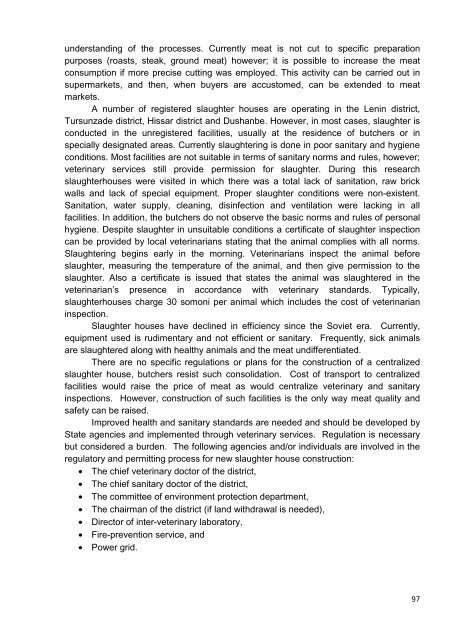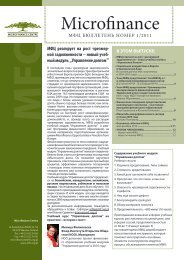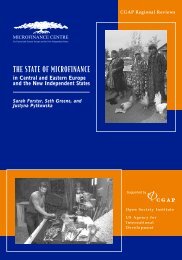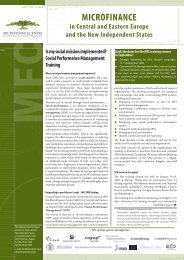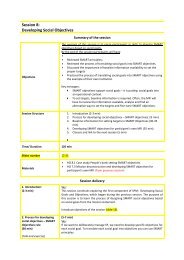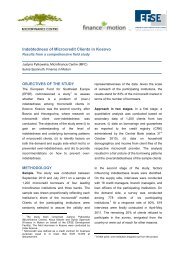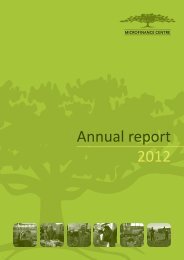Value Chains research report Tajikistan final - Microfinance Centre
Value Chains research report Tajikistan final - Microfinance Centre
Value Chains research report Tajikistan final - Microfinance Centre
Create successful ePaper yourself
Turn your PDF publications into a flip-book with our unique Google optimized e-Paper software.
understanding of the processes. Currently meat is not cut to specific preparation<br />
purposes (roasts, steak, ground meat) however; it is possible to increase the meat<br />
consumption if more precise cutting was employed. This activity can be carried out in<br />
supermarkets, and then, when buyers are accustomed, can be extended to meat<br />
markets.<br />
A number of registered slaughter houses are operating in the Lenin district,<br />
Tursunzade district, Hissar district and Dushanbe. However, in most cases, slaughter is<br />
conducted in the unregistered facilities, usually at the residence of butchers or in<br />
specially designated areas. Currently slaughtering is done in poor sanitary and hygiene<br />
conditions. Most facilities are not suitable in terms of sanitary norms and rules, however;<br />
veterinary services still provide permission for slaughter. During this <strong>research</strong><br />
slaughterhouses were visited in which there was a total lack of sanitation, raw brick<br />
walls and lack of special equipment. Proper slaughter conditions were non-existent.<br />
Sanitation, water supply, cleaning, disinfection and ventilation were lacking in all<br />
facilities. In addition, the butchers do not observe the basic norms and rules of personal<br />
hygiene. Despite slaughter in unsuitable conditions a certificate of slaughter inspection<br />
can be provided by local veterinarians stating that the animal complies with all norms.<br />
Slaughtering begins early in the morning. Veterinarians inspect the animal before<br />
slaughter, measuring the temperature of the animal, and then give permission to the<br />
slaughter. Also a certificate is issued that states the animal was slaughtered in the<br />
veterinarian’s presence in accordance with veterinary standards. Typically,<br />
slaughterhouses charge 30 somoni per animal which includes the cost of veterinarian<br />
inspection.<br />
Slaughter houses have declined in efficiency since the Soviet era. Currently,<br />
equipment used is rudimentary and not efficient or sanitary. Frequently, sick animals<br />
are slaughtered along with healthy animals and the meat undifferentiated.<br />
There are no specific regulations or plans for the construction of a centralized<br />
slaughter house, butchers resist such consolidation. Cost of transport to centralized<br />
facilities would raise the price of meat as would centralize veterinary and sanitary<br />
inspections. However, construction of such facilities is the only way meat quality and<br />
safety can be raised.<br />
Improved health and sanitary standards are needed and should be developed by<br />
State agencies and implemented through veterinary services. Regulation is necessary<br />
but considered a burden. The following agencies and/or individuals are involved in the<br />
regulatory and permitting process for new slaughter house construction:<br />
• The chief veterinary doctor of the district,<br />
• The chief sanitary doctor of the district,<br />
• The committee of environment protection department,<br />
• The chairman of the district (if land withdrawal is needed),<br />
• Director of inter-veterinary laboratory,<br />
• Fire-prevention service, and<br />
• Power grid.<br />
97


